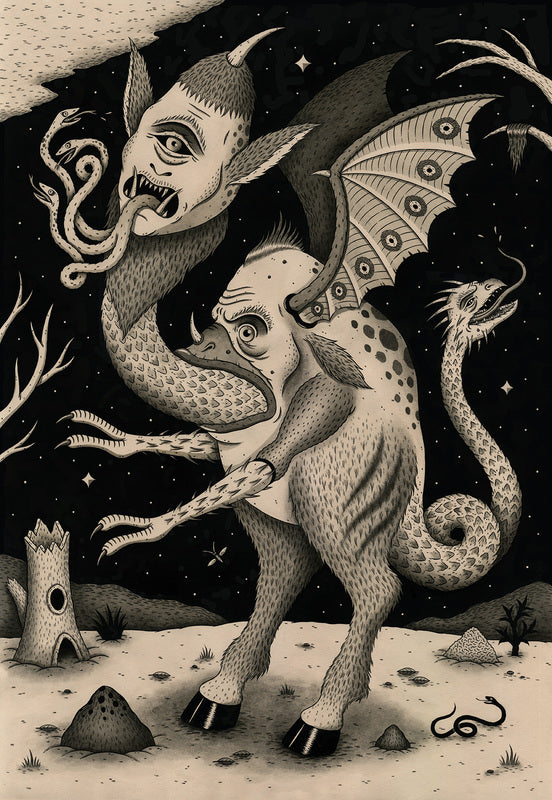Jon MacNair - The Bazycki
$800.00
This product is sold out
17.5" x 25" // India ink on paper // **SOLD**
Jon MacNair created this piece for Antler Gallery's annual show "Unnatural Histories" in 2016
The Bazycki (bah-zee-kee)
While the origins of this legendary monster are somewhat ambiguous, descriptions of the creature are surprisingly consistent.
The beast stood an imposing 13-15 feet tall, with the head, abdomen and tail seemingly comprised of different creatures. It had an egg-shaped head with large pointed ears, a glaring cyclops eye and a mouth which housed three hissing serpents (these were said to be venomous and would paralyze whatever they struck, allowing the Bazycki to feed on the prey at their leisure). The head was perched atop a long scaly neck which led down into the mouth of another beast that comprised the lower half of the monster. The face of this creature was described as a cross between a duck and a fish, with a round glassy eye and a horn near the nostril region. The back of the creature was spotted, with a sizable pair of wings attached. The arms were thin and spiny, each ending in a two-pronged claw. Like the neck of the monster, the tail was also long and scaly and ended with a horrible head (this one spiked like a morning star). The Bazycki was reputed to emit a vibratory creaking sound which escalated into a shrill squealing cry when confronted by humans.
Accounts tell of the creature terrorizing several villages in Eastern Europe over a 7 year period in the middle of the 14th century. Often seen on the roofs of buildings at night or disappearing into wooded areas just before daybreak, the Bazycki struck fear into the hearts of hundreds of villagers during it's reign of terror. Oddly, there are nearly no reports of it killing humans. More often than not, it would leave mounds of dead livestock in it's wake, disturbingly devoid of their innards, tongues and eyes. According to one noted 21st century cryptozoologist, if the creature ever actually existed, it would have presented "a veritable plethora of horrors", based on the 14th century descriptions.


